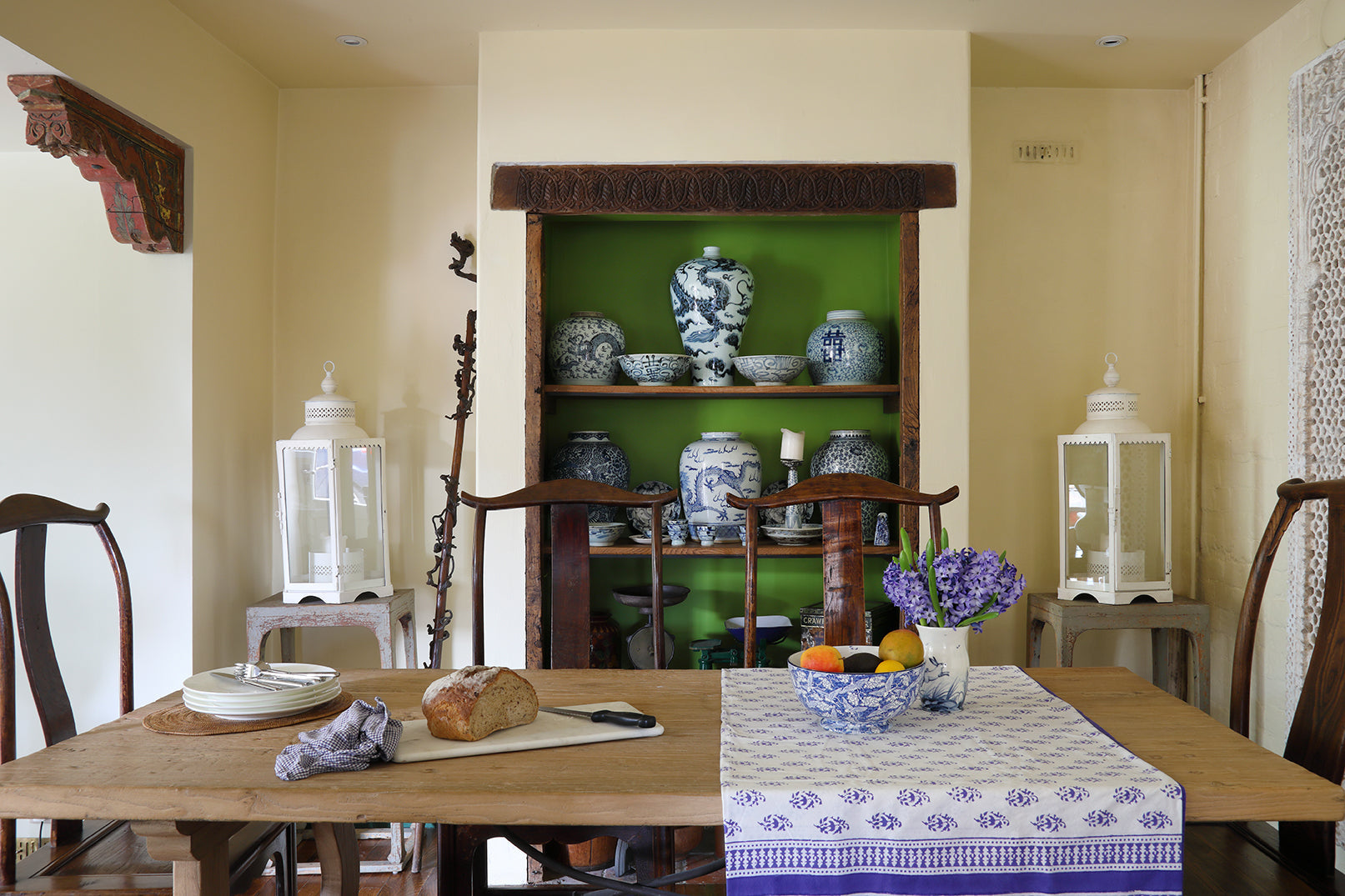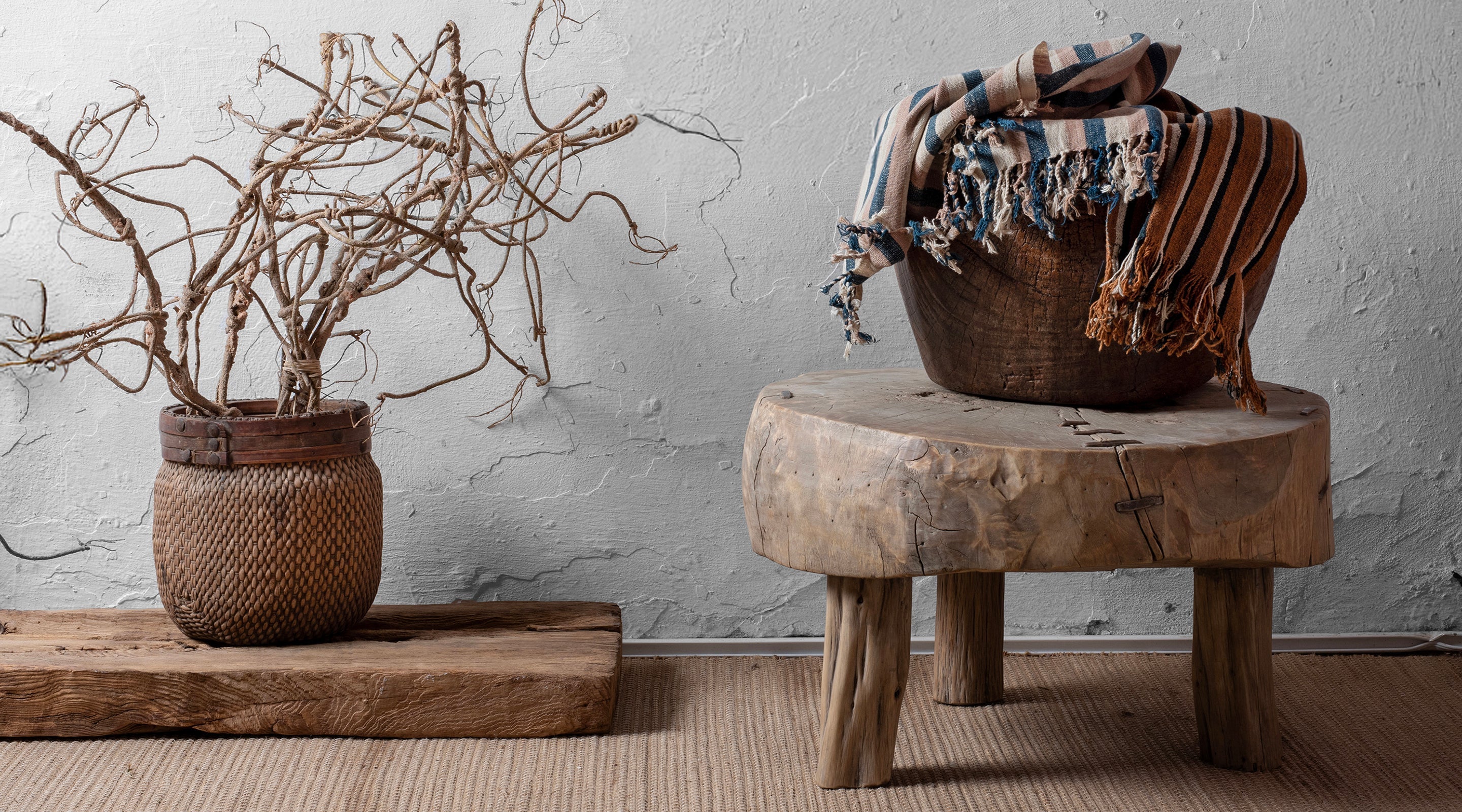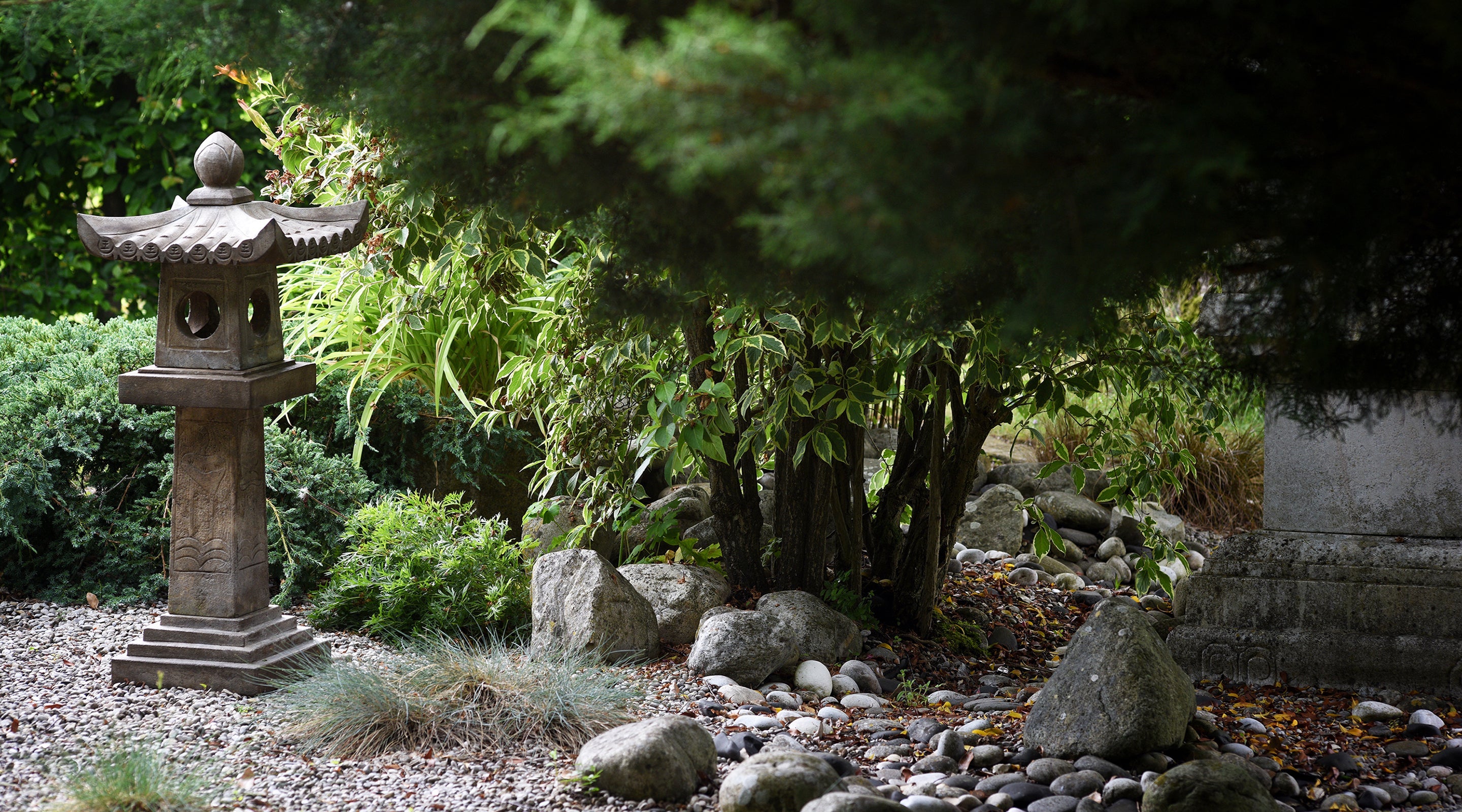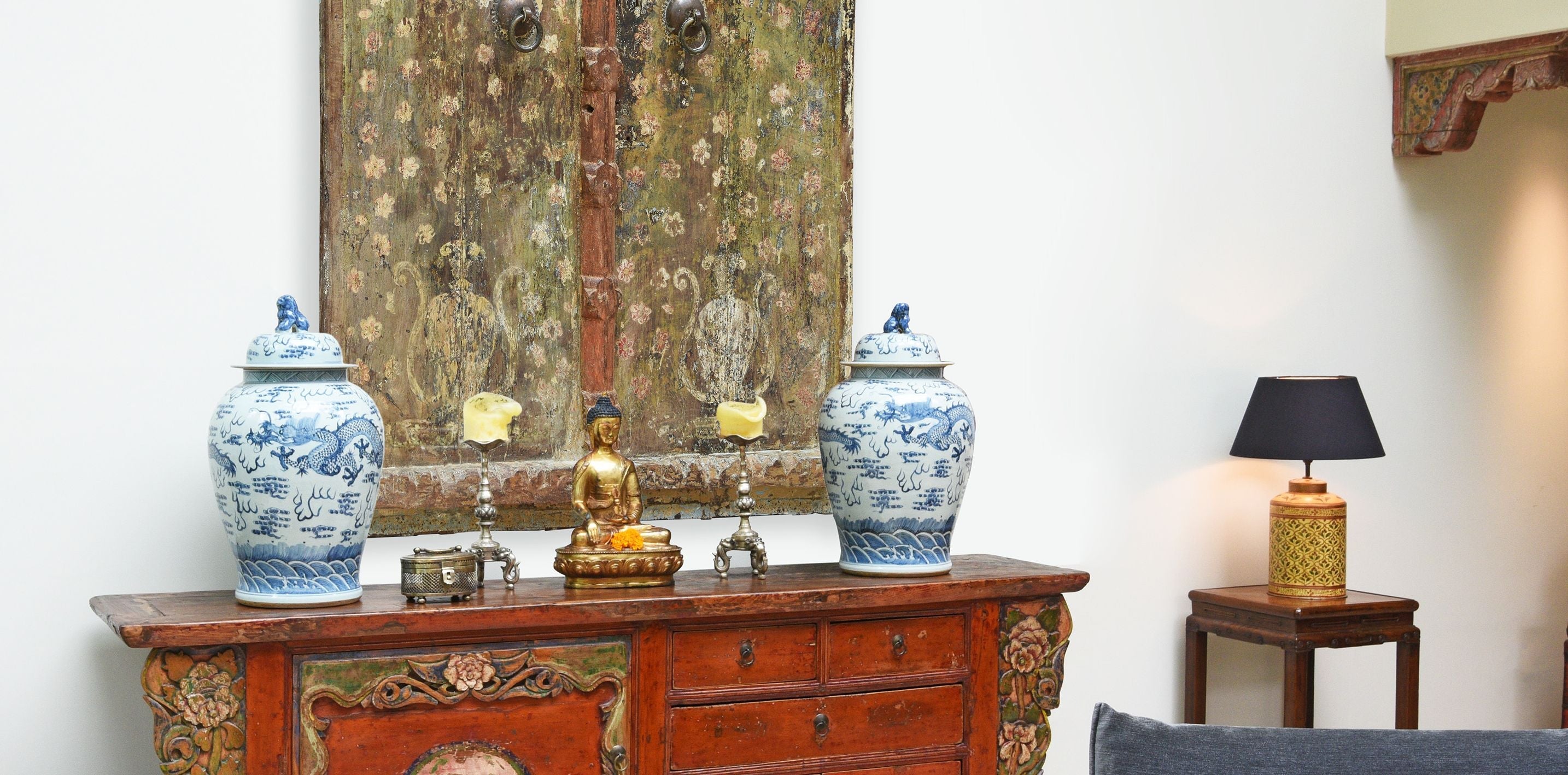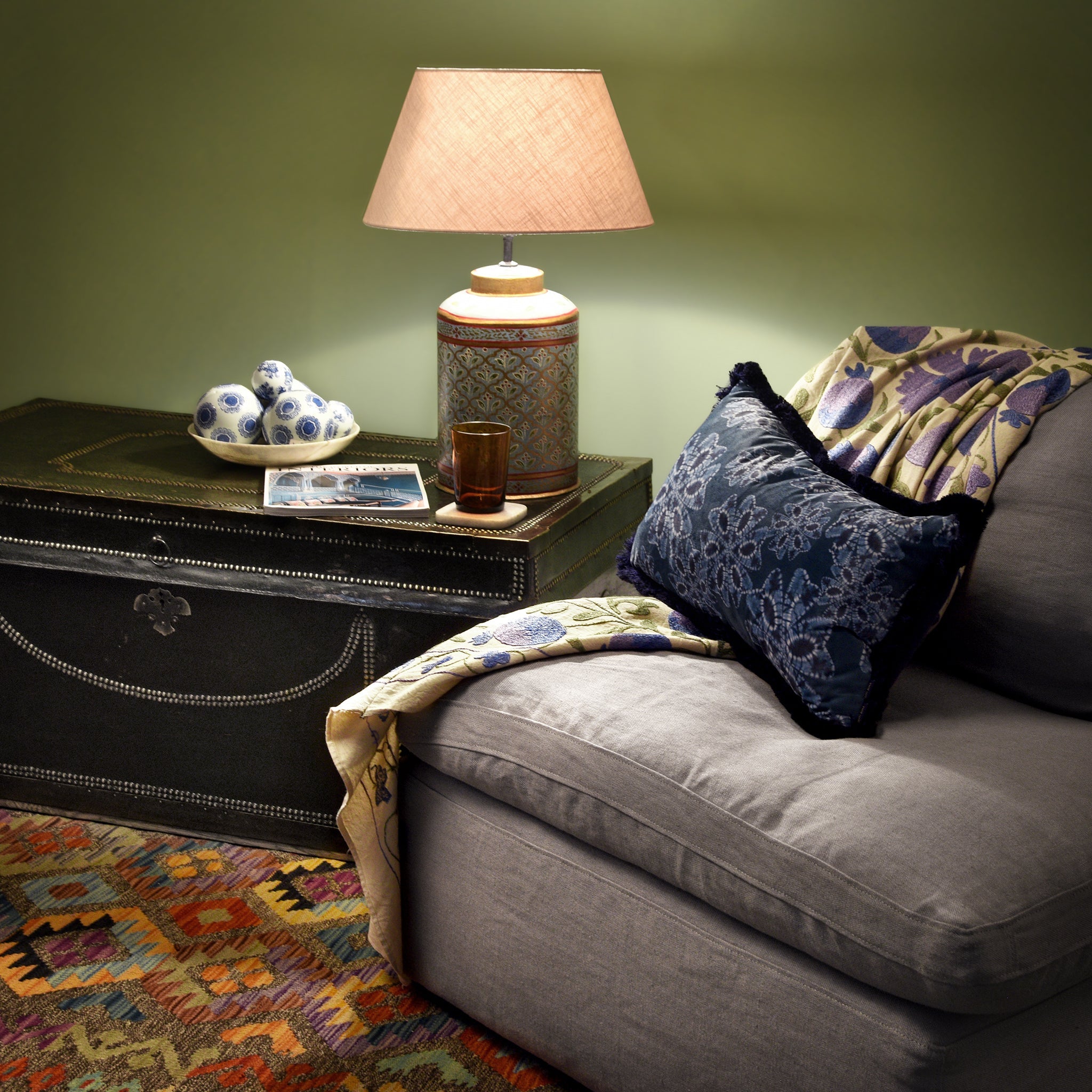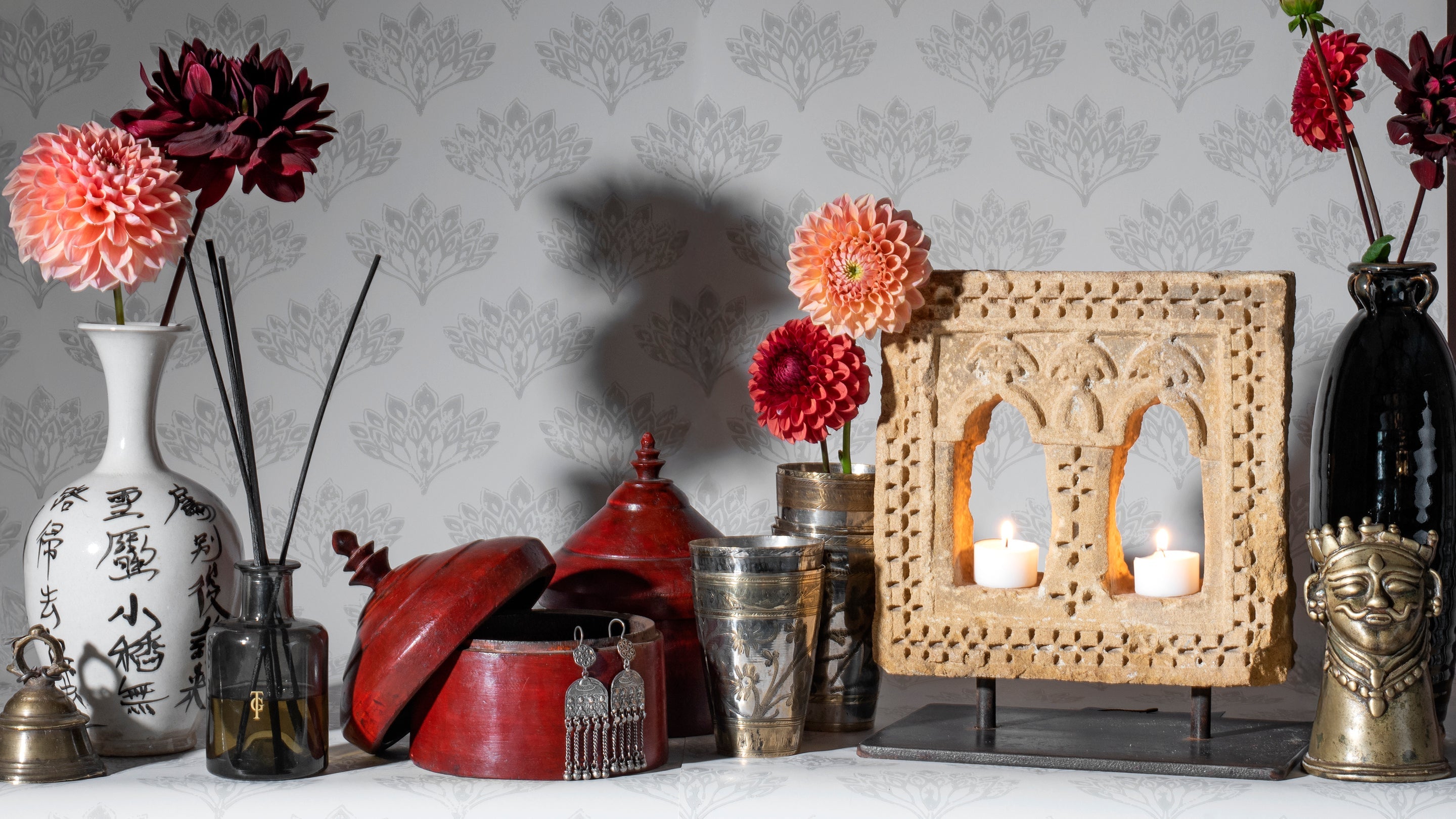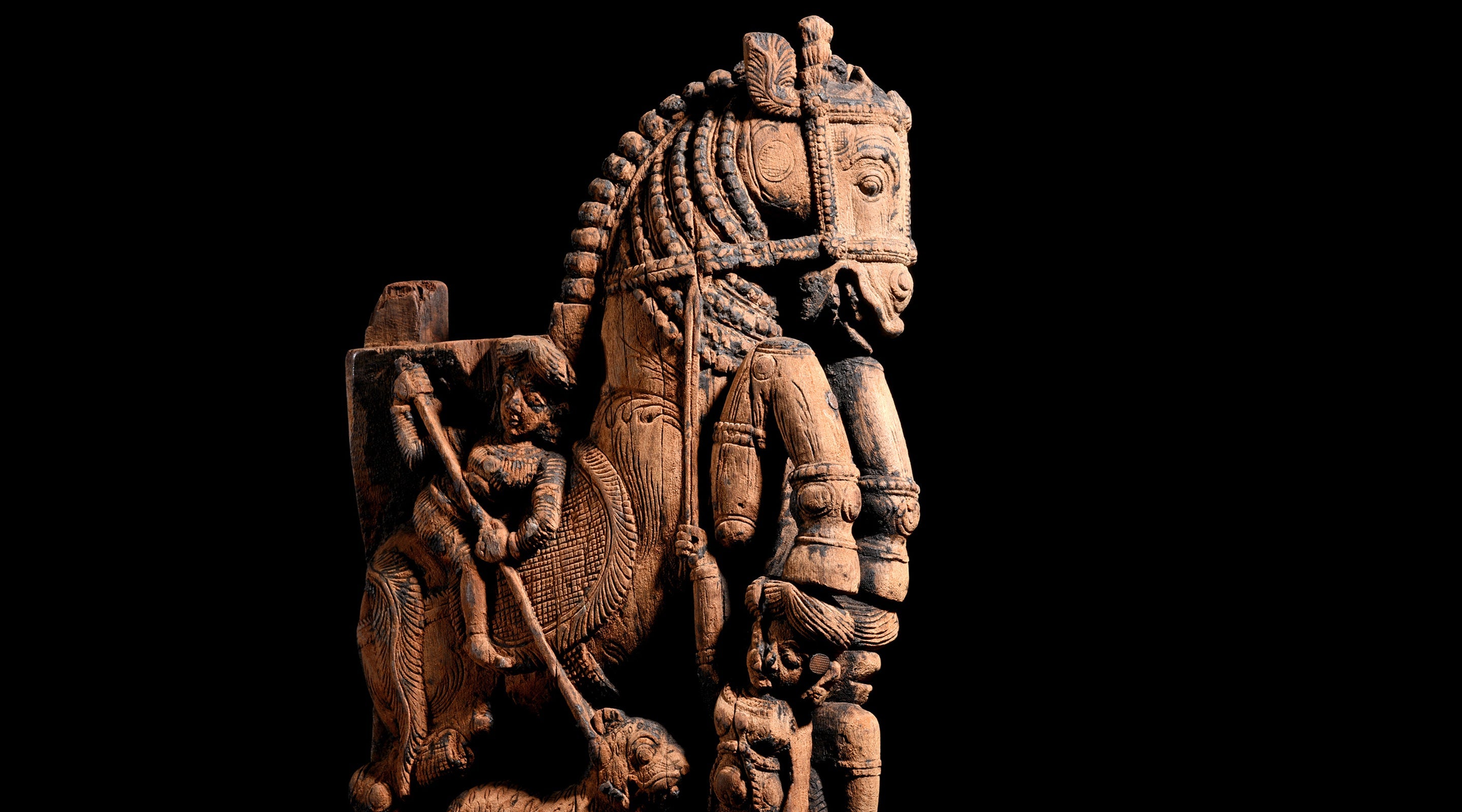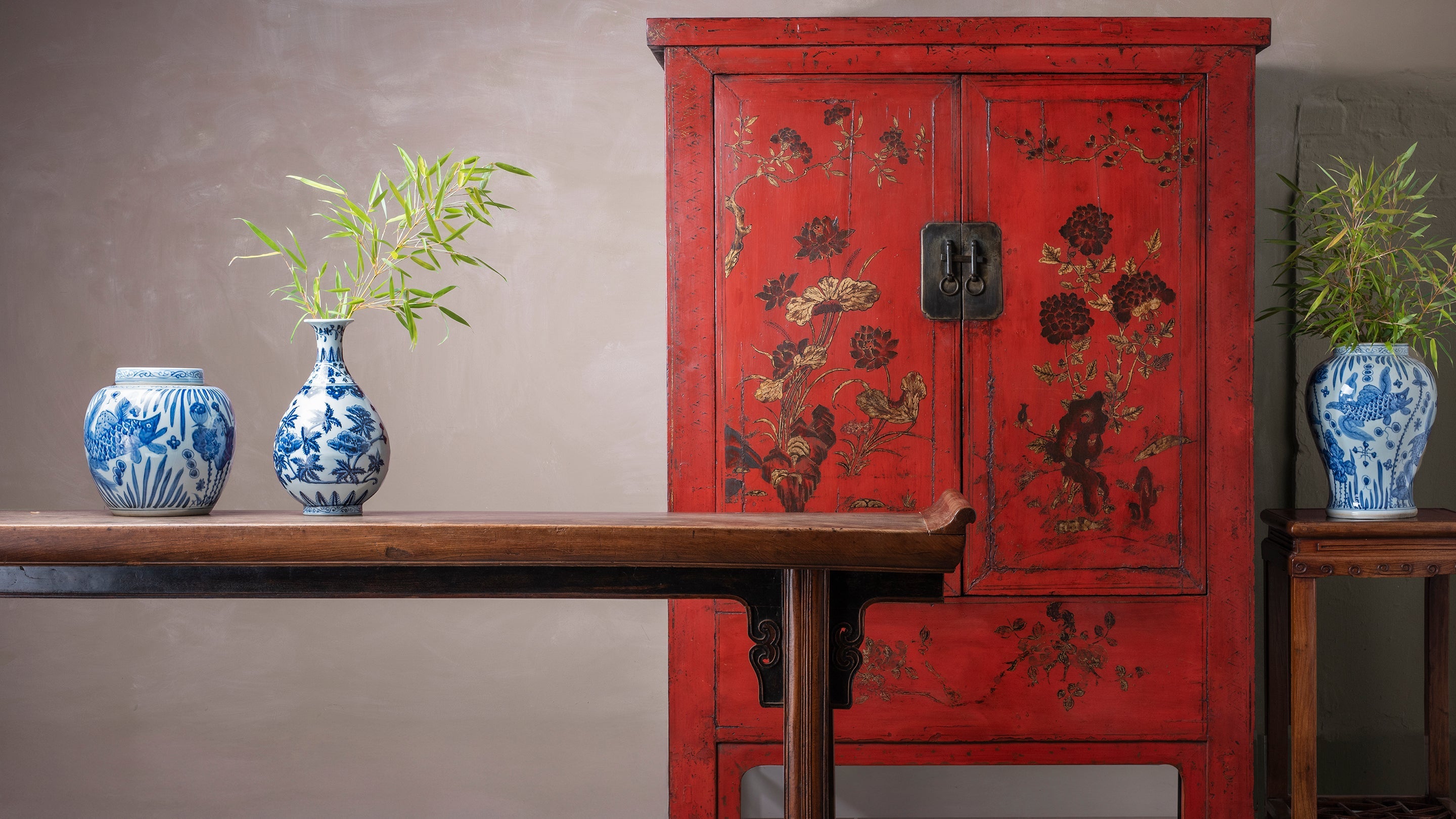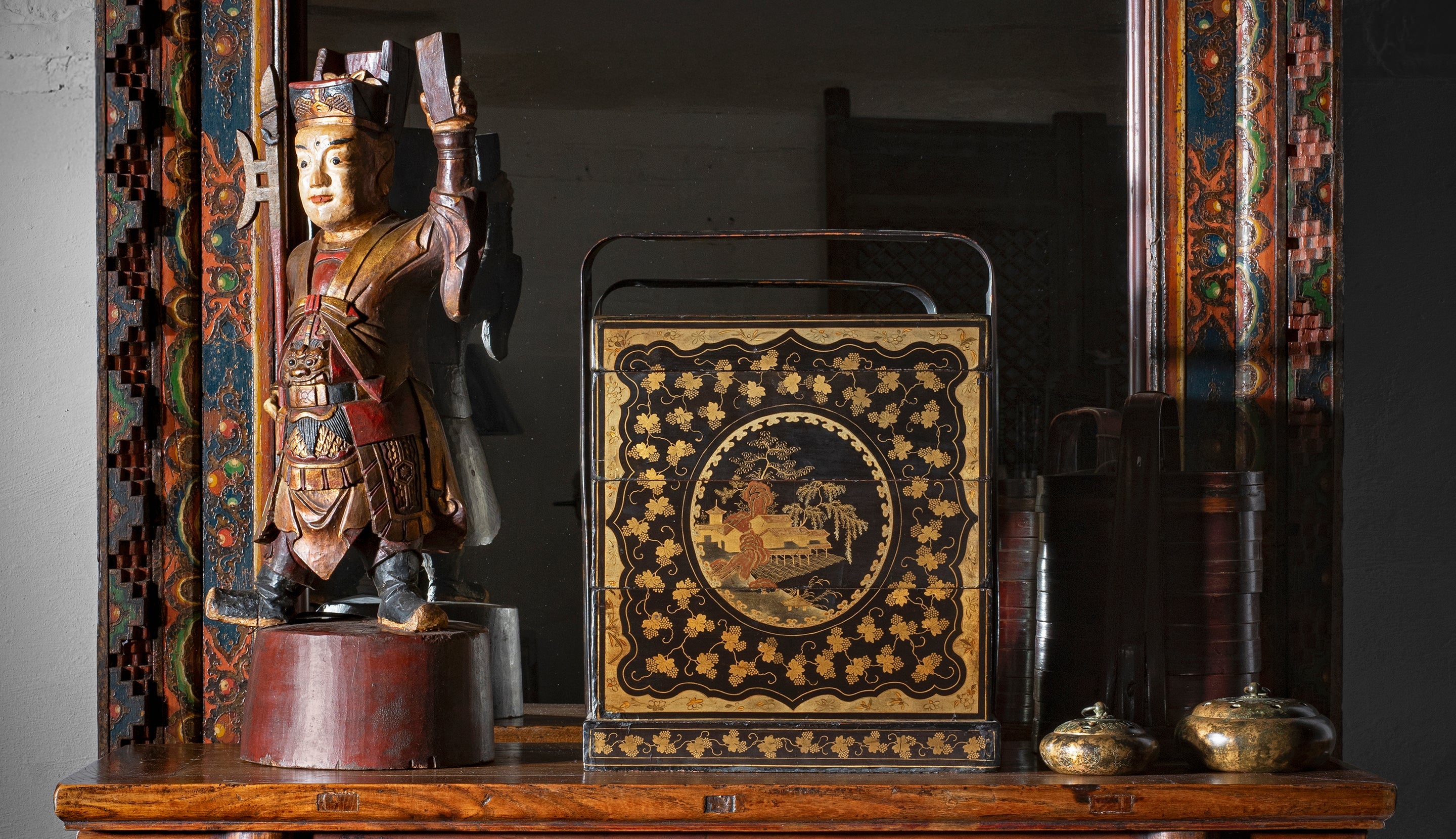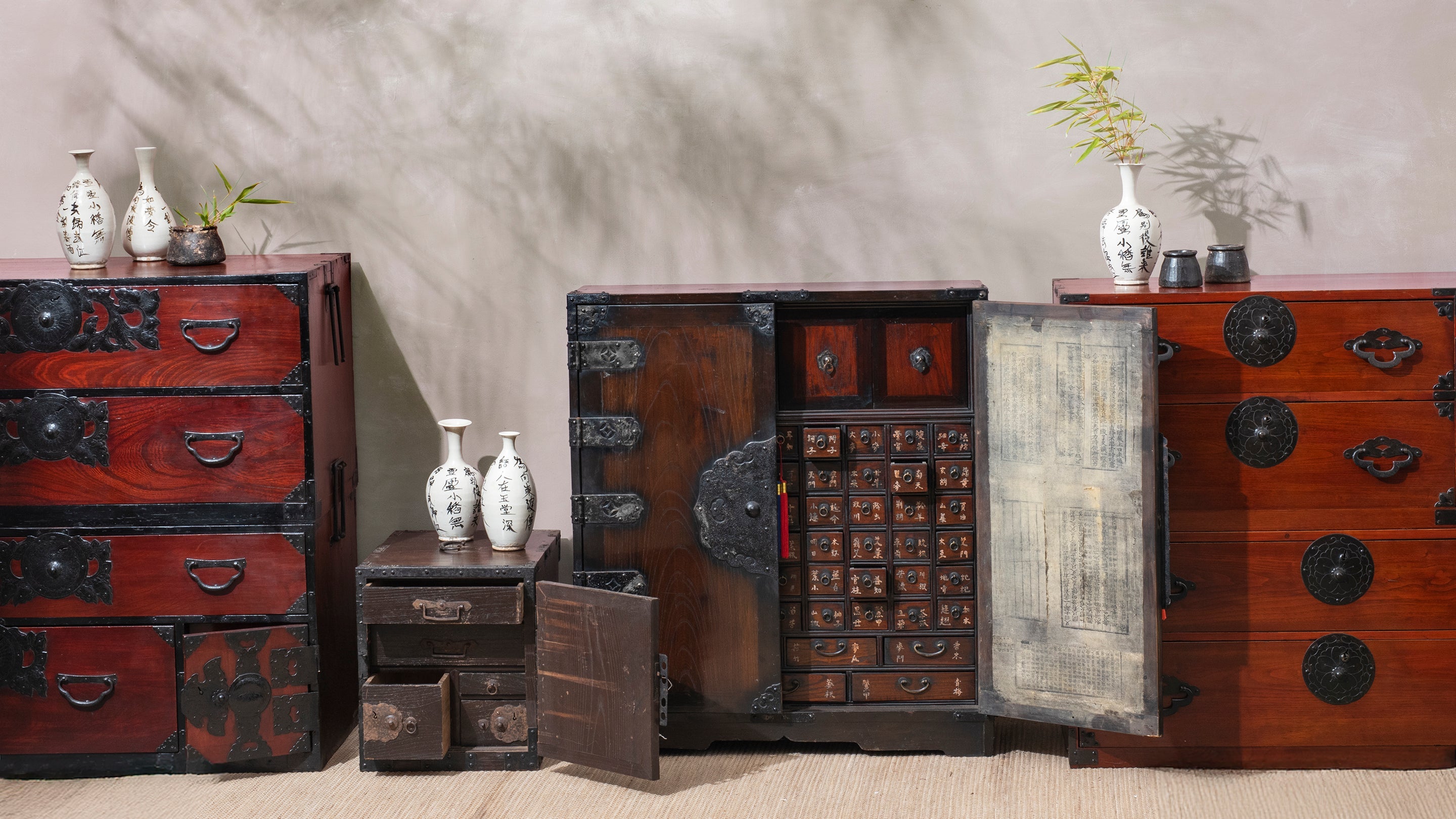A curated collection of antique Chinese sideboards and altar cabinets, crafted from traditional hardwoods including elm, southern elm, walnut, poplar, cypress and pine — each showcasing centuries of artistry, lacquer work, and refined joinery.
Antique Chinese sideboards were traditionally used to store clothing, bedding, or ceremonial items. Many feature a removable central panel between the doors — a clever design allowing easy access and adaptability. In more recent years, cabinets from provinces such as Shanxi, Gansu and Mongolia have been sympathetically converted from top-opening to front-opening to better suit contemporary Western interiors, without losing their original integrity or craftsmanship.
Lacquered Chinese Sideboards
Finely lacquered sideboards remain among the most sought-after pieces of Chinese antique furniture. The deep black lacquer of Shanxi cabinets conveys quiet sophistication, while the vibrant red lacquer of Dongbei and Gansu adds warmth and colour to modern interiors. Many pieces retain original gilt decoration or auspicious motifs — cranes, peonies, clouds and lotus blossoms symbolising prosperity and peace.
Painted and Decorative Finishes
Painted Chinese sideboards from the 18th and 19th centuries showcase exceptional artistry, often depicting Buddhist imagery or lively floral panels in layered pigments. The distressed paint and subtle fading that develop over time give each sideboard a soft, romantic patina that blends effortlessly with both rustic and contemporary décor.
Traditional Forms and Construction
Classic forms include altar cabinets with high stretchers and coffer-style bases, as well as long low storage sideboards ideal for dining spaces or entryways. Their construction reflects traditional Chinese joinery — precise, durable and free of nails — while the fine hardwoods used lend strength and harmony to each design.
Materials and Woods
Traditional Chinese and Mongolian sideboards were crafted from a rich variety of regional hardwoods. Each timber offers a distinct tone, texture, and character that has defined Chinese cabinetry for centuries.
- Elm, Ulmus spp. (Yumu 榆木) — the most widely used hardwood in northern China, valued for its swirling grain, resilience, and warm honey tone.
- Southern Elm (Red Elm), Zelkova serrata (Jumu 榉木) — denser and finer-grained than northern elm, often used in higher-quality southern furniture with a rich reddish-brown hue.
- Walnut, Juglans spp. (Hutaomu 胡桃木) — dark, lustrous, and elegant, prized for its refined figure and smooth polish.
- Poplar, Populus spp. (Baiyangmu 白杨木) — a versatile softwood commonly used for painted and lacquered furniture due to its light weight and workability.
- Cypress, Cupressus spp. (Baimu 柏木) — aromatic and close-grained, traditionally reserved for temples, altars, and high-quality cabinetry.
- Pine, Pinus spp. (Songmu 松木) — a rustic softwood used in provincial furniture, lending warmth and simplicity to folk-painted pieces.
Styling Your Chinese Sideboard
Chinese sideboards suit a variety of interiors — from farmhouse kitchens to minimalist apartments. A black lacquer piece can add sculptural drama beneath a mirror, while a hand-painted Mongolian cabinet introduces colour and heritage to a modern hallway. Pair with carved mirrors, bronze lamps, or simple ceramics to highlight the balance of age and grace inherent in each piece.

Explore New Arrivals
With regular shipments from India, China & The UK art market there's always newness





